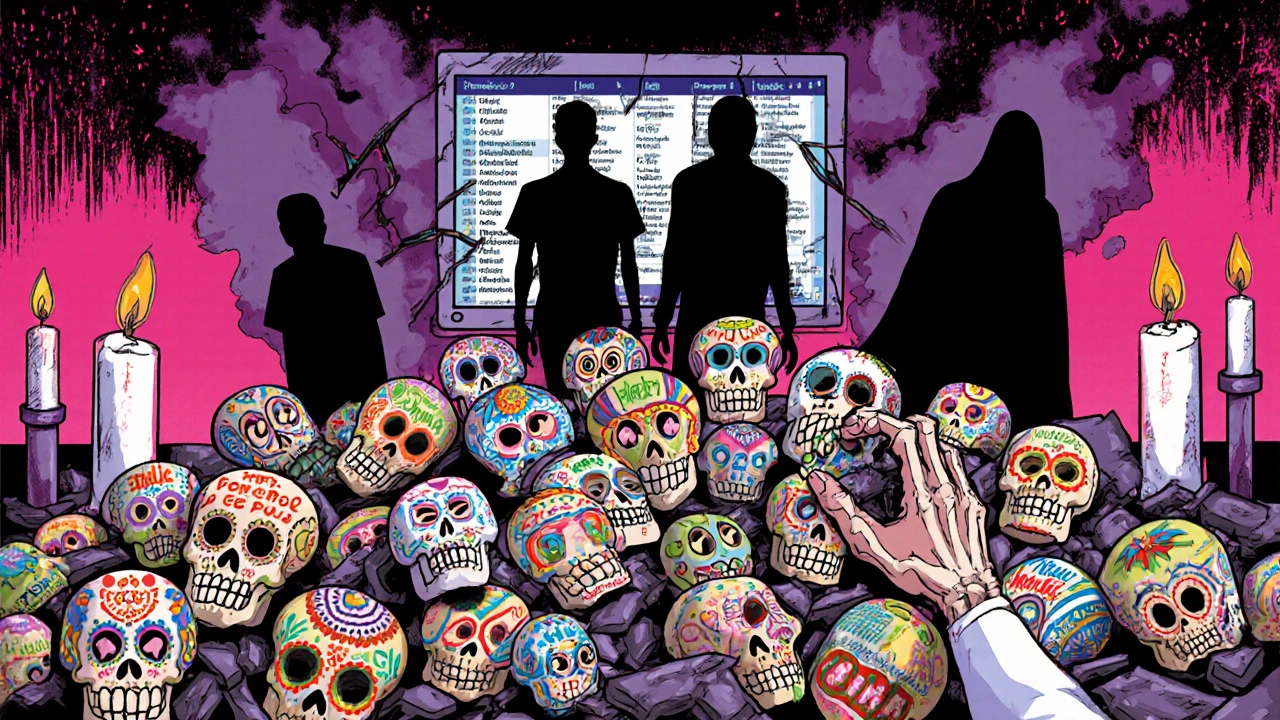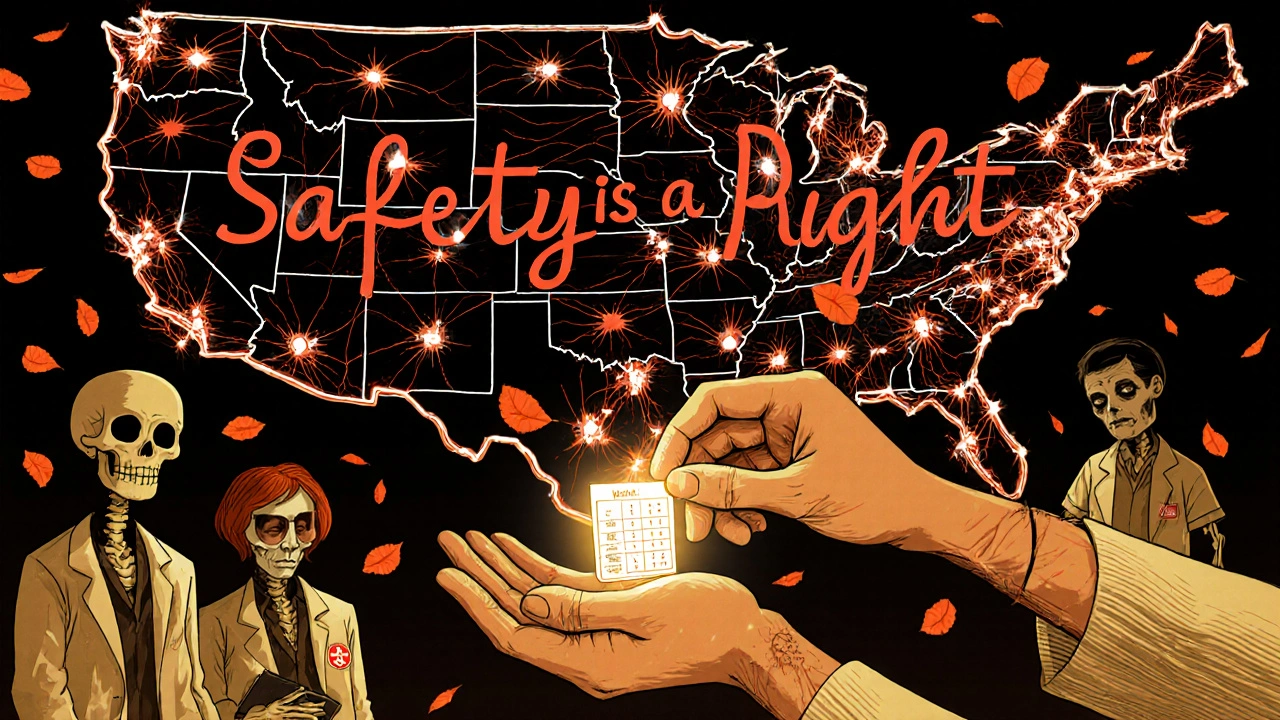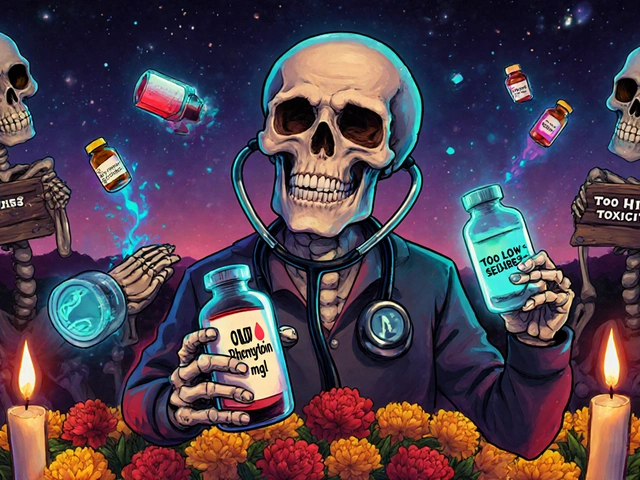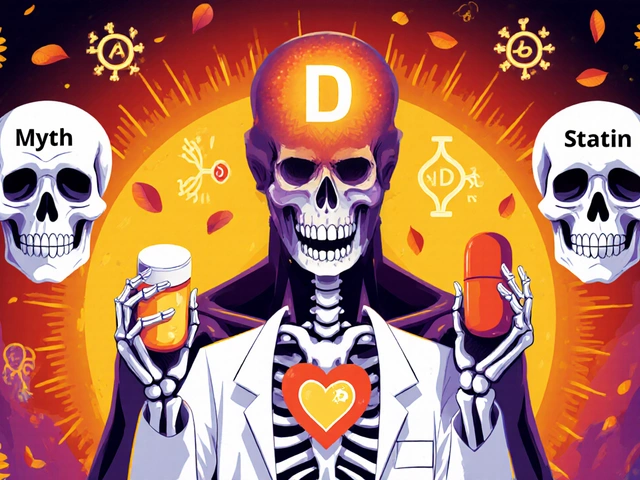Every year, more than 1.5 million people in the U.S. end up in the emergency room because of medication mistakes. Not because they took too much, but because the wrong drug was given, the dose was off, or they weren’t told how to take it properly. These aren’t rare accidents. They’re systemic failures-and they’re killing people.
Medication Errors Are a Leading Cause of Harm
The World Health Organization calls medication safety one of the biggest patient safety challenges in the world. In high-income countries, 1 in every 10 patients suffers harm from a medication error. In poorer countries, it’s 1 in 20. That’s not a glitch in the system. It’s how the system works.
These aren’t just minor side effects. They’re strokes from incorrect blood thinners, kidney failure from wrong antibiotic doses, and fatal overdoses from fentanyl-laced fake pills. In 2023 alone, the DEA seized over 80 million counterfeit tablets laced with fentanyl. Fentanyl is now the top cause of death for Americans between 18 and 45. And most of these aren’t from street drugs-they come from the healthcare system.
The cost? $42 billion globally each year. In the U.S., medication non-adherence alone causes 125,000 preventable deaths and $300 billion in avoidable healthcare spending. That’s more than the entire annual budget of the CDC.
Why This Isn’t Just a Doctor or Pharmacist Problem
Most people think medication errors happen because someone forgot to check a label. But research shows 89% of these errors come from system failures-not human mistakes.
Think about it: a nurse rushes between 12 patients. The EHR system shows two drugs with similar names-hydralazine and hydroxyzine. One treats high blood pressure. The other treats anxiety. They look almost identical on screen. The nurse clicks the wrong one. No one notices until the patient’s blood pressure crashes.
This isn’t negligence. It’s bad design. Studies show that 43% of prescription errors intercepted by pharmacists are due to poorly designed EHR interfaces. Look-alike, sound-alike drug names, confusing dropdown menus, and alerts that never stop buzzing (called "alert fatigue") are the real culprits.
Even when the right drug is prescribed, patients don’t take it right. Only 78.4% of Medicare patients take their cholesterol meds as prescribed. For diabetes, it’s 74.8%. That’s not laziness. It’s confusion. A 2024 survey found that 76% of hospitalized patients couldn’t explain their discharge medications. One in three didn’t understand why they were taking them.
Technology Can Help-But Only If It’s Done Right
There are proven tools that work. Barcode scanning at the bedside cuts administration errors by 86%. Electronic prescribing reduces mistakes by 55%. AI systems can now predict which patients are most likely to have an adverse reaction with 73% accuracy.
The Mayo Clinic used AI to reconcile medications when patients left the hospital. Result? A 52% drop in post-discharge errors. Geisinger Health’s pharmacist-led program boosted adherence to 89% and cut hospital readmissions by 27%.
But technology alone won’t fix this. Only 63% of U.S. hospitals have fully compliant EHR systems that can talk to each other. Many still use paper records or outdated software. And even when the tech is there, staff don’t use it properly. A 2024 AHRQ survey found that 67% of hospitals faced resistance from staff who saw new systems as extra work.
There’s also a security problem. The FDA recorded over 200 deaths and 1,900 injuries from infusion pump errors between January 2023 and August 2024. These machines are connected to hospital networks-and many have unpatched software flaws. A hacker could change a dose. A glitch could deliver a lethal amount of insulin. The FDA’s 2023 guidance on medical device cybersecurity is a start. But enforcement is weak.

How Other Countries Are Doing Better
The U.S. spends more on healthcare than any country. But it doesn’t lead in safety.
The Netherlands cut medication errors by 44% by making electronic prescribing mandatory across all providers-from doctors to pharmacies to home care. Everyone uses the same system. No paper. No fax. No guesswork.
The U.K. uses a centralized reporting system that tracks every serious error. Because of this, they reduced major medication incidents by 30% in five years.
In the U.S., only 14% of medication errors are ever reported. Why? Because reporting isn’t mandatory. There’s no national database. Hospitals fear lawsuits. Staff fear blame. So errors vanish into silence.
Even the data we have is messy. The U.S. FDA’s reporting system gets 1,245 adverse drug reaction reports per million people. India’s system, with a population five times larger, gets only 182 per million. That doesn’t mean India has fewer errors. It means they have less reporting.
What’s Being Done-And What’s Missing
CMS now tracks 16 medication safety measures in its Star Ratings program. Top-performing Medicare plans get extra money for high adherence. That’s a smart incentive. But it’s still focused on outcomes, not prevention.
The FDA’s Drug Supply Chain Security Act requires full electronic tracking of prescription drugs by November 2025. That’s huge. It means we’ll finally know if a pill came from a legitimate source-or a fake lab in China.
But here’s what’s missing: mandatory national reporting of all medication errors. No country with a functioning public health system lets errors go uncounted. The U.S. still doesn’t require it.
There’s also no national standard for pharmacy technician training. Only 38 states require certification. That means in 12 states, someone with no formal training can legally fill prescriptions.

Real Solutions That Work
Change doesn’t come from big announcements. It comes from small, smart fixes:
- Visual medication schedules for patients-reduces errors by 38%
- Standardized order sets in EHRs-cut errors by 62%
- Pharmacist-led medication reviews-save $1,200 per patient per year and boost adherence by 40%
- Patient-facing portals where people can see their meds, ask questions, and get reminders-increases adherence by 29%
And the return on investment? Every $1 spent on medication safety saves $7.50 in healthcare costs. Pharmacist-led programs? $13.20 back for every dollar spent.
That’s not a cost. That’s a profit.
The Bottom Line: This Is a Public Health Crisis
Medication safety isn’t a hospital policy. It’s not a pharmacist’s job. It’s not a tech upgrade.
It’s a public health priority-on par with clean water, vaccines, and seatbelts. Every year, more Americans die from medication errors than from car crashes or gun violence. And yet, we don’t treat it like an emergency.
We have the tools. We know what works. We have the data. What we lack is the will to make it mandatory, standardized, and funded at the national level.
Until we do, the next person to die from a preventable medication mistake could be your parent, your sibling, or you.
What is medication safety?
Medication safety is the practice of preventing errors and harm during every step of the medication process-prescribing, dispensing, administering, and monitoring. It includes making sure patients get the right drug, in the right dose, at the right time, and understand how to take it. It also means protecting patients from counterfeit drugs, dangerous interactions, and system failures.
How common are medication errors?
Medication errors affect 1 in every 10 patients in high-income countries, and 1 in every 20 in low- and middle-income countries. In the U.S., they cause over 1.5 million emergency room visits each year and contribute to 125,000 preventable deaths annually. Most errors happen in hospitals and pharmacies, but many occur when patients take medications at home.
Why are medication errors so hard to prevent?
They’re hard to prevent because they stem from system flaws-not just human error. Poorly designed EHRs, confusing drug names, lack of communication between providers, inconsistent training, and underfunded pharmacy services all contribute. Even when technology exists, staff often don’t use it properly due to time pressure or resistance to change.
What technologies improve medication safety?
Barcode-assisted medication administration (BCMA) reduces administration errors by 86%. Electronic prescribing cuts prescribing mistakes by 55%. AI tools can predict high-risk patients with 73% accuracy. Medication reconciliation software helps prevent errors during hospital transitions. Patient portals that show medication lists and reminders increase adherence by nearly 30%.
What can patients do to protect themselves?
Patients should always ask: What is this medication for? How do I take it? What are the side effects? Keep a written list of all your meds-including supplements-and bring it to every appointment. Use a pill organizer. Set phone reminders. Don’t be afraid to ask pharmacists to explain your prescriptions. If something seems wrong, speak up.
Is medication safety improving?
In some places, yes. The WHO’s global "Medication Without Harm" initiative saw high-income countries reduce severe harm by 28% since 2017. Some U.S. hospitals, like Mayo Clinic and Geisinger, have made big gains. But nationally, progress is slow. Only 14% of errors are reported in the U.S., and many systems still lack basic safeguards. Without mandatory reporting and standardized practices, improvement remains uneven.
What Comes Next?
The FDA’s new Digital Health Center of Excellence is investing $45 million through 2026 to support safer medication tech. The Safer Technologies Program will fast-track tools that cut errors by 30% or more. Medicare Advantage plans are already tying provider payments to medication adherence.
But real change needs more than innovation. It needs policy. It needs funding. It needs to be treated like the public health crisis it is.
Until then, every time someone takes a pill they don’t understand-or gets the wrong dose because a screen was poorly designed-we’re not just failing a patient. We’re failing the entire system.








12 Comments
Akash Chopda November 24, 2025
Big Pharma owns the EHR companies. They want you confused so you keep buying pills. The FDA? Bought and paid for. Fentanyl in prescriptions? That's not a mistake. That's the business model. No one's fixing it because they're profiting off the chaos.
Sam Jepsen November 26, 2025
This is so important. I've seen nurses overwhelmed with 15 patients and 3 different systems. We need to stop blaming people and fix the systems. Pharmacist-led teams are the future - they’re the unsung heroes keeping us alive.
Natashia Luu November 26, 2025
The notion that medication errors are systemic failures is a convenient narrative for those who refuse accountability. If professionals were competent, trained, and held to standards, none of this would occur. This is not a technology problem - it is a moral and professional failure.
akhilesh jha November 28, 2025
i mean like... why do we even have ehrs if they just make things worse? i saw a guy get the wrong med bc the screen had hydralazine and hydroxyzine next to each other and the nurse was tired and... yeah. also why do we let people with no training fill scripts in 12 states?? this is insane.
stephanie Hill November 28, 2025
They’re not just failing patients - they’re failing families. My mom died because a nurse clicked the wrong button on a screen that looked like a video game. No one got fired. No one apologized. Just another statistic buried under a pile of compliance reports. This isn’t healthcare. It’s a horror show with a white coat.
steven patiño palacio November 29, 2025
I've worked in rural clinics across three states. The solution isn't more tech - it's more trained pharmacists and better communication. When the pharmacist sits down with the patient and says, 'This is why you take this, and here's what to watch for,' adherence jumps. It's simple. But it requires investment - not just in software, but in people.
Yvonne Franklin November 30, 2025
Barcode scanning works. E-prescribing works. Pharmacist reviews work. Stop talking. Start implementing. We have the data. The cost of inaction is measured in lives.
Bartholemy Tuite December 1, 2025
Look I’m from Ireland and we had this same mess 15 years ago. Paper scripts, faxed orders, pharmacists guessing what doctors meant. Then we went all digital - mandatory, unified system, everyone on the same platform. Errors dropped like a rock. Took political will. Took funding. Took time. But it worked. The U.S. has the money. It just doesn’t have the guts to make the hard call.
Neoma Geoghegan December 3, 2025
Medication reconciliation = clinical gold. Pharmacist-led transitions of care = ROI 13:1. Why isn’t this reimbursed at 100%? Why are we still paying for ER visits instead of preventing them? We’re not broken - we’re just choosing not to fix it.
Nikki C December 3, 2025
We treat medication like it’s a magic bullet instead of a complex tool. We hand out pills like candy and expect people to magically understand how to use them. We don’t teach people how to be patients. We don’t teach them how to ask. We don’t give them tools. We just blame them when they die.
Alex Dubrovin December 4, 2025
I work in a hospital and the alerts are insane. Like 50 popups an hour. You stop seeing them. You just click next. It’s like crying wolf until the wolf actually shows up. The tech is good but the design is broken. Someone needs to fix this before someone dies because they ignored a warning they’d seen 200 times already
Jeff Hicken December 5, 2025
the whole thing is a scam. doctors dont even know what theyre prescribing. pharmacies are understaffed. patients dont read the labels. and the government just prints more money to pay for the ER visits. its all just a giant money funnel. who really benefits? not the patient.